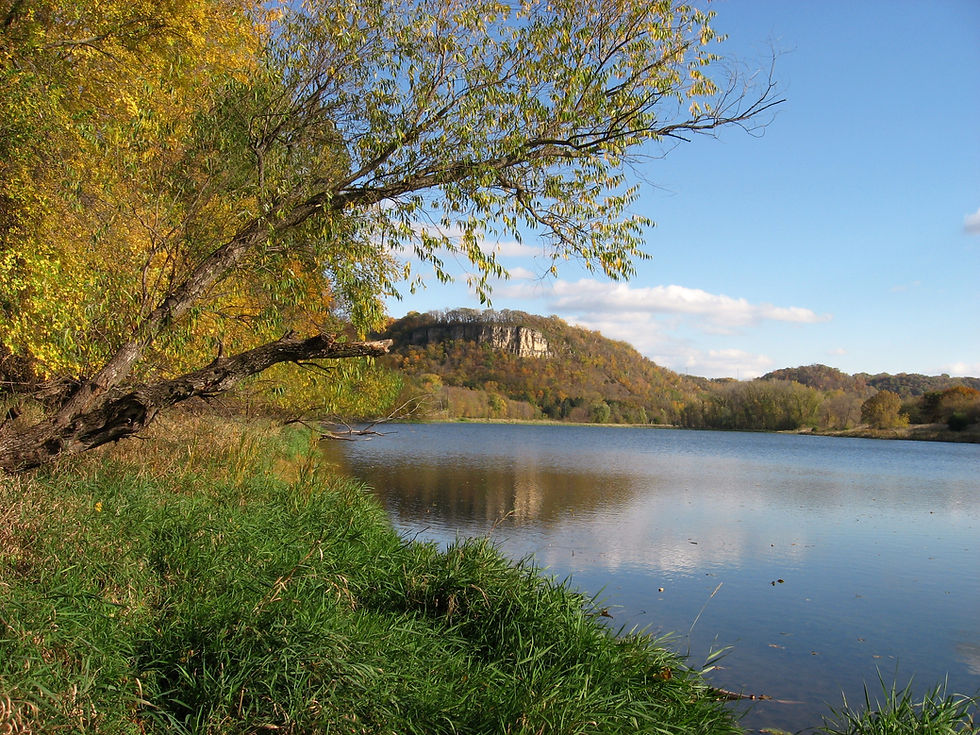"Mid-Winter Wildlife Survival"
- wacoutanaturenotes
- Feb 19
- 3 min read

Local barred and great horned owls usually begin mating and nesting in the middle of winter. They lay and incubate their eggs several weeks before other raptors. After a 28 to 30 day incubation period, this gives the young owlets an advantage of more time to grow and mature into successful hunters before the next winter.
The earlier hatching usually take place around the time of snow melt and before green up. This makes it much easier for adults to hunt and catch small rodents to feed their hungry owlets.

Since the establishment of the Wacouta prairie, habitat conditions for common rodents are excellent. Meadow voles create tunnels between the snow and grass. Periodically the tunnels can be seen on top of the snow. There voles provide an excellent source of food for owls, hawks and even fox.

For those folks walking the Wacouta Trail this winter, you might have observed numerous places where cottontail rabbits have feasted on the bark of lower sections of sumac. With the below normal temperatures, food sources for rabbits quickly become exhausted. Sumac stems within easy reach become a life saver.

The outer dark colored bark of the sumac has very little if any actual food value. The green inner layer known as the cambium consists of the living cells. In the spring, this layer creates new bark and wood. The nutritious cambium layer is a life saver for rabbits.

About this time each winter, several deer seem to show up out of nowhere and vanish about as quickly. The term for this phenomenon is yarding. It usually takes place during times of severe cold temperatures and a shrinking source of food.
In the late afternoon drive on a nearby Hay Creek township road on February 12th, Kathy and I observed 46 deer within a distance of 1 mile. They were coming out of a wooded bluff and into a picked cornfield to feed.

With a pronounced drop in testosterone in the male whitetail after the rutting season, weakness develops in the connective tissue and antlers drop off. This typically takes place in late winter.
These dropped antlers are referred to as sheds and are hunted in the spring by collecting enthusiasts. Of the 46 deer we observed, this was the only one sporting head gear.

As I mentioned in an earlier post, if we experience very cold winter temperatures and the backwaters freeze up, the best location to observe trumpeter swans is up at Lock and Dam # 3. On February 13th in the afternoon, Kathy and I visited the open water below the nuclear plant and counted a couple hundred swans at various locations. These swans typically spend the night at this location and in the morning head out to nearby picked cornfields to feed and rest.

As you approach the dam, there is a public parking lot on the left. Once parked, hike the trail heading upstream to an observation area. Don't forget your camera, binoculars or spotting scope and enjoy this memorable experience.

As you are walking up to the observation area, you will no doubt observe several bald eagles and literally hundreds of wintering goldeneye waterfowl. Some will be in flocks on the water feeding while others will be circling overhead.
These diving ducks spend the winter here feeding on small fish like gizzard shad and various aquatic invertebrates. In the spring, they head up to the forested areas of northern Minnesota and Canada to breed.




Alway enjoy your Notes. Lots of information in a small package, encouraging people to get out in the wild.
Thanks Bruce! I really enjoy reading your blog.
Thank you Bruce! I always look forward to your posts, so full of information.
Bruce….You are such a gift to us all with these posts! Thank you!!